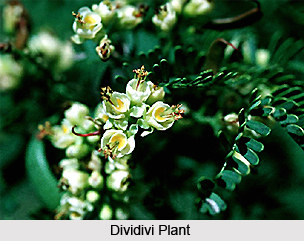 Dividivi plant is known for its medicinal values and the botanical name of this plant is Caesalpinia coriaria (Jacq.) Willd.
Dividivi plant is known for its medicinal values and the botanical name of this plant is Caesalpinia coriaria (Jacq.) Willd.
Dividivi plant is known as `tauri` in Bengali, `gilo` in Oriya, and `dividivi` in Telegu. This is an exotic, medium-sized tree with a short, crooked bole and wide-spreading, drooping branches. The bark of the plant is grey-brown in colour. Leaves are bipinnate, leaflets are oblong-linear, brownishgreen or with black dots on lower surface, and dark green above. Flowers are pale green or yellow (sometimes white) in colour, fragrant, in short terminal and axillary panicles. Fruits are strap-shaped, flexuous and twisted, not covered with prickles and have 1-10 seeded. This plant bears flowers from July to November and fruits in December.
Though Dividivi plant has the native land in South America and the West Indies, it is introduced to India during the 19th century, where it is grown for ornament in gardens in various parts of the country, particularly in Andhra Pradesh and Tamil Nadu. Sometimes it is used for coffee shade, and occasionally naturalized in Uttar Pradesh, West Bengal, Gujarat and Karnataka.
Dividivi plant is known for its medicinal properties. The pods are astringent, antiperiodic and tonic. Their decoction is used for washing bleeding piles and atonic abscesses. The bark is antiperiodic, and is used to treat chronic fever. In Siddha, the pods are used to treat stomatitis and ulcers. Rich in tannins (28-41% by weight), they are also highly valued by the tanning industry.











